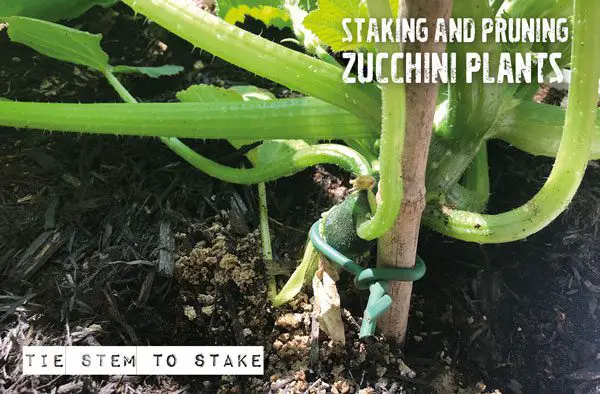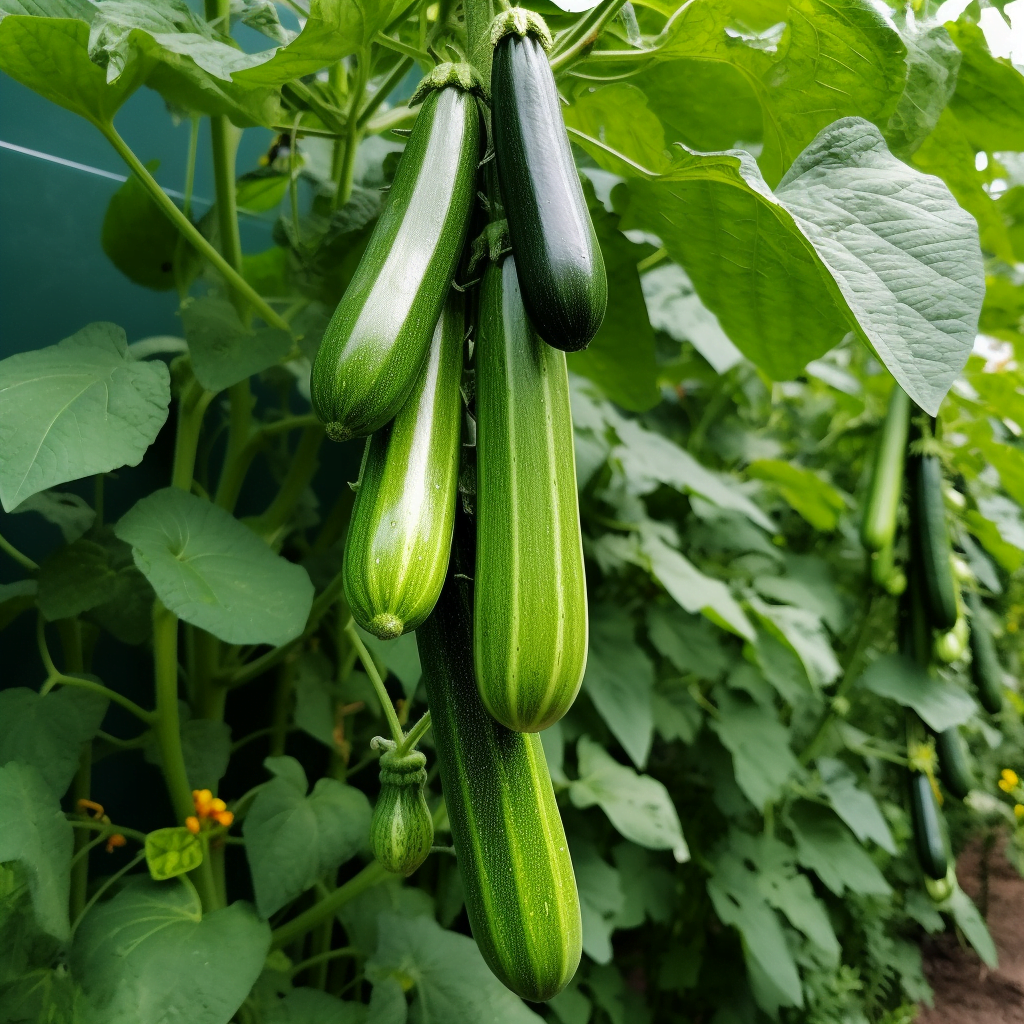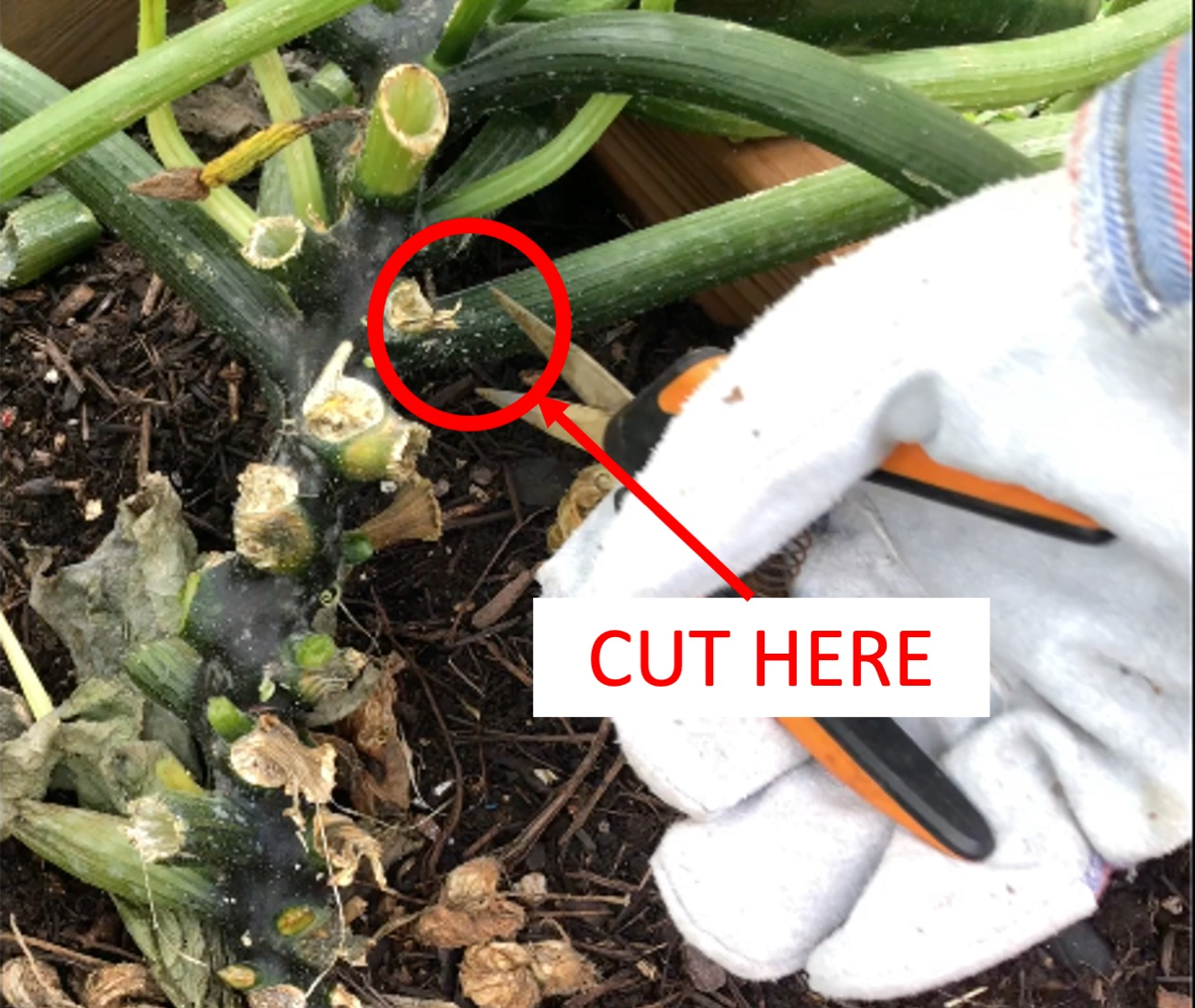Are you finding yourself with an abundant zucchini harvest or maybe your zucchini plants are growing out of control? Fear not, because we have the ultimate guide to help you master the art of pruning zucchini plants! Pruning zucchini plants is a crucial and often overlooked task that can lead to healthier plants and higher yields. In this article, we will provide you with step-by-step instructions on how to prune zucchini plants, including the best time to prune, the tools you’ll need, and the techniques to use. So grab your gardening gloves and let’s get pruning!
Why Prune Zucchini Plants?
Promotes Plant Health
Pruning zucchini plants is an essential step in promoting their overall health and vitality. By removing any diseased or damaged leaves, you prevent the spread of infection and give the plant a chance to redirect its energy towards healthy growth. Pruning also allows for better air circulation within the plant, reducing the risk of fungal diseases. Overall, pruning helps maintain the health and well-being of your zucchini plants.
Increases Yield
If you’re looking to maximize your zucchini harvest, pruning is a crucial technique. By selectively removing certain leaves and vines, you can encourage the plant to put more energy into producing fruits. Pruning also helps in thinning out the foliage, allowing for better sunlight penetration and airflow to the remaining leaves and flowers. The end result? A bountiful zucchini yield that you can enjoy throughout the growing season.
Controls Size and Spread
While zucchini plants are known for their vigorous growth, they can sometimes become unruly and take up more space than intended. Pruning helps you maintain control over the size and spread of your zucchini plants. By removing excessive growth and redirecting energy towards the main vine, you can keep the plants compact and manageable. This is particularly beneficial for gardeners with limited space or those growing zucchini in containers.
Improves Air Circulation
Zucchini plants, like many other vegetables, are prone to fungal diseases that thrive in humid and stagnant conditions. By pruning away dense foliage and creating space between leaves, you improve air circulation within the plant. This allows for faster drying of leaves after rain or watering, preventing the buildup of moisture that can lead to diseases like powdery mildew. Better air circulation also helps keep pests at bay, as they prefer crowded and sheltered areas to thrive.
Reduces Disease Risk
Pruning zucchini plants is a proactive measure to reduce the risk of diseases. By removing any infected or diseased plant parts, you prevent the spread of pathogens that can harm the entire plant. Regular pruning ensures that potential disease sites are removed promptly, minimizing the likelihood of infection. Additionally, practicing good sanitation, such as cleaning and disinfecting your pruning tools, further decreases the chances of disease transmission.
When to Prune Zucchini Plants
Early Pruning
Early pruning of zucchini plants should be done when the plant is still young, and the first true leaves have started to develop. At this stage, carefully remove any damaged or yellowing leaves to promote healthy growth. By pruning early, you allow the plant to focus its energy on establishing a strong root system and developing sturdy stems.
Throughout the Growing Season
Pruning zucchini plants throughout the growing season is a continuous process. Regularly inspect the plants for any signs of disease or overgrowth, and promptly address the issues through targeted pruning. This could include removing excessive foliage, damaged leaves, or overgrown vines. By maintaining regular pruning sessions, you ensure that the plants stay healthy and productive.
Late Season Pruning
Towards the end of the growing season, as the zucchini plants start to decline, you can perform some late-season pruning. This involves removing dead leaves and spent vines to prevent disease carryover. Late season pruning also allows you to tidy up the garden, preparing it for the next growing season. Remember, however, not to prune excessively late in the season, as the remaining leaves are still necessary for the plant’s energy production.
Tools Needed for Pruning
Pruning Shears
When it comes to pruning zucchini plants, a good pair of pruning shears is a must-have tool. Look for shears that are sharp and have a bypass design, which provides clean cuts without crushing the plant tissue. Opt for shears with comfortable handles and a locking mechanism for safe storage. With a reliable pair of pruning shears, you’ll be able to effectively trim and shape your zucchini plants.
Gloves
Gloves are another essential tool for pruning zucchini plants. They not only protect your hands from potential cuts and scratches but also provide a barrier against any harmful substances that may be present on the plant or its foliage. Choose gloves that fit well and are made of a durable material, such as leather or synthetic fabric, to ensure optimal protection.
Disinfectant
To maintain good plant health, it’s important to regularly clean and disinfect your pruning tools. A disinfectant solution made from a mix of water and household bleach works well for this purpose. After each use, wipe down your pruning shears with the disinfectant solution to remove any potential pathogens or diseases that could be transferred to other plants. This simple step can significantly reduce the risk of disease transmission.
Basic Pruning Techniques
Cleaning and Disinfecting Tools
Before you start pruning your zucchini plants, it’s crucial to clean and disinfect your pruning tools. This ensures that you won’t inadvertently spread diseases from one plant to another. Use a solution made of water and household bleach to wipe down the blades of your pruning shears. Allow them to air dry before proceeding with pruning.
Identifying Pruning Targets
When pruning zucchini plants, it’s important to identify the areas that need attention. Look for leaves that are yellowing, damaged, or diseased, and remove them from the plant. Focus on removing older leaves at the bottom of the plant that may be blocking airflow and inhibiting sunlight penetration for the younger leaves. You may also need to trim excessive vine growth and thin out any crowded areas.
Pruning Cuts
When making pruning cuts, be sure to make clean and precise cuts at a 45-degree angle. This minimizes the surface area exposed to potential infection. Cutting too close to the main stem can harm the plant, while cutting too far away can leave a stub that may attract pests or diseases. Take your time and make each cut with care, ensuring that you’re only removing the necessary plant parts.
Removing Suckers
Suckers are small shoots that emerge from the base of the zucchini plant or from leaf joints. While they may seem harmless, allowing suckers to grow can divert energy away from fruit production and contribute to overcrowding. To maintain optimal plant health, prune away these suckers as soon as you notice them.
Removing Dead or Diseased Leaves
As mentioned earlier, removing dead or diseased leaves is vital in reducing the risk of disease spread within your zucchini plants. Use your pruning shears to carefully remove any leaves that are discolored, shriveled, or showing signs of infection. By promptly removing these leaves, you prevent pathogens from moving to healthy parts of the plant.
Removing Overgrown Vines
Zucchini plants can quickly become overcrowded with excessive vine growth. To prevent competition for resources and ensure proper air circulation, prune away any overgrown and tangled vines. Focus on maintaining a balanced plant structure, removing the vines that are obstructing light and air movement.
Training Vines
Pruning zucchini plants also gives you the opportunity to train the vines in a way that maximizes productivity and space utilization. As the plants grow, gently guide the main vine along a trellis or support structure to encourage upward growth. This keeps the plant organized and prevents sprawling, which can make harvesting more challenging.

Pruning Zucchini for Optimal Health
Creating a Central Leader
To promote optimal health and growth, consider creating a central leader in your zucchini plants. This involves selecting a strong and healthy main vine and removing any competing side branches or suckers. By focusing the plant’s energy on a single main vine, you can encourage vigorous growth and better nutrient distribution.
Preventing Overcrowding
Overcrowding can lead to a host of issues in zucchini plants, including reduced airflow, increased humidity, and greater susceptibility to diseases. Pruning plays a vital role in preventing overcrowding. Regularly remove excessive foliage and thin out any crowded areas, allowing the remaining leaves to receive ample sunlight and maintain optimum health.
Avoiding Cross-Contamination
Cross-contamination occurs when diseases or pests are inadvertently spread from one plant to another through contaminated tools or hands. This can drastically impact the health of your zucchini plants. To avoid cross-contamination, make sure to disinfect your pruning tools between each use. Additionally, wash your hands or wear gloves when handling different plants to prevent the transfer of harmful pathogens.
Encouraging Sunlight Penetration
Sunlight is crucial for the growth and overall health of zucchini plants. Through careful pruning, you can encourage better sunlight penetration to the lower parts of the plant. Remove any dense foliage that may be shading the lower leaves and flowers, ensuring that they receive adequate sunlight for photosynthesis and optimal growth.
Pruning to Maximize Yield
Encouraging Fruit Production
If you’re aiming for a plentiful harvest of zucchini, pruning can play a significant role in encouraging fruit production. Focus on removing excessive foliage that may be blocking sunlight from reaching the flowers, as this can hinder pollination and subsequent fruit development. By selectively pruning, you create a balance between foliage and flowers, allowing for healthier fruit set.
Removing Excess Leaves
While leaves are essential for the photosynthesis process, too many can create overcrowding and prevent adequate airflow. Prune away excessive leaves, especially those at the lower parts of the plant that are no longer contributing significantly to its growth. Removing excess leaves allows the plant to direct its resources towards fruit production and developing healthy and sturdy stems.
Thinning out Flowers
When zucchini plants are overloaded with flowers, the plant’s energy may be spread thin, resulting in smaller and less flavorful fruits. Thinning out flowers through pruning helps the plant focus on producing fewer, but higher quality, zucchinis. Remove any excess flowers that are developing close to each other to prevent competition for resources and promote better fruit development.

Controlling Size and Spread
Limiting Lateral Growth
If space is limited in your garden, you’ll want to control the lateral growth of your zucchini plants. Lateral growth refers to the side branches and vines that spread horizontally. By pruning these lateral growths, you can keep the plants more compact and prevent them from overtaking other plants or encroaching on walkways. Regularly remove any excessive lateral growth to maintain plant size and spread.
Managing Vertical Growth
While zucchini plants naturally grow in a vining manner, managing their vertical growth is still important to prevent them from becoming too tall and unwieldy. Prune away any excessive vertical growth that may hinder the plant’s ability to support its fruits or access adequate sunlight. Encourage the plant to develop strong lateral growth by training the vines along a trellis or support structure.
Improving Air Circulation
Reducing Fungal Diseases
One of the key benefits of pruning zucchini plants is the improvement in air circulation, which plays a crucial role in reducing fungal diseases. Good air circulation helps in drying out the foliage quickly after rain or watering, preventing the buildup of moisture that encourages fungal growth. By removing dense foliage and ensuring adequate spacing between leaves, you create an environment that is less hospitable to fungi.
Minimizing Moisture Buildup
Pruning also minimizes moisture buildup within the zucchini plant. When leaves and vines are overcrowded, they trap moisture, creating a damp environment that favors fungal diseases. By removing excess foliage and promoting air circulation, you reduce the risk of moisture buildup and create a healthier growing environment for your zucchini plants.
Pruning to Reduce Disease Risk
Removing Infected Plant Parts
Pruning zucchini plants is an effective way to reduce the risk of disease spreading throughout the entire plant. If you notice any signs of infection, such as discoloration, spots, or wilting, promptly prune away the infected plant parts. Be sure to make clean cuts and avoid touching healthy plant tissue with your pruning tools. Removing the infected parts helps contain the disease and prevents it from spreading further.
Practicing Sanitation
Maintaining proper sanitation practices is essential when pruning zucchini plants. After each pruning session, make sure to clean and disinfect your pruning tools to prevent the transfer of diseases from one plant to another. Additionally, dispose of any pruned plant material properly to minimize the chances of disease recurrence. By practicing good sanitation, you create a healthier environment for your zucchini plants.
Preventing Pests
Pruning zucchini plants helps keep pests in check. By removing excessive foliage and creating a more open and exposed environment, you discourage pests from taking up residence within the plant. Additionally, pruning allows you to spot pests more easily and take appropriate measures to control them before they become a significant issue. Regularly inspect your zucchini plants during pruning sessions for any signs of pests.

Common Mistakes to Avoid
Over-pruning
While pruning is beneficial, it’s important not to overdo it. Over-pruning can weaken your zucchini plants and reduce their overall productivity. Avoid removing too many leaves or vines at once, as this can overload the remaining parts of the plant and impact its health. Take a cautious and selective approach when pruning, focusing on removing only what is necessary for the plants’ well-being.
Neglecting Pruning
On the other end of the spectrum, neglecting pruning altogether can also have negative consequences. Without regular pruning, zucchini plants can become crowded, prone to diseases, and produce smaller and less flavorful fruits. Make sure to incorporate regular pruning sessions into your gardening routine to maintain the health and productivity of your zucchini plants.
Pruning at Wrong Times
Timing is crucial when it comes to pruning zucchini plants. Pruning too early, when the plants are still establishing themselves, can impede their growth. On the other hand, pruning too late in the season can affect the plants’ ability to produce fruits. It’s essential to determine the right timing for each type of pruning and adhere to it. Refer to the section on “When to Prune Zucchini Plants” for guidance on the appropriate timing for different types of pruning.
In conclusion, pruning zucchini plants is a beneficial practice that promotes plant health, increases yield, controls size and spread, improves air circulation, and reduces disease risk. By utilizing the right tools, following proper pruning techniques, and considering the specific needs of your plants, you can optimize their health and productivity. Remember to avoid common mistakes, such as over-pruning or neglecting pruning, and always prioritize the well-being of your zucchini plants. Happy pruning!



